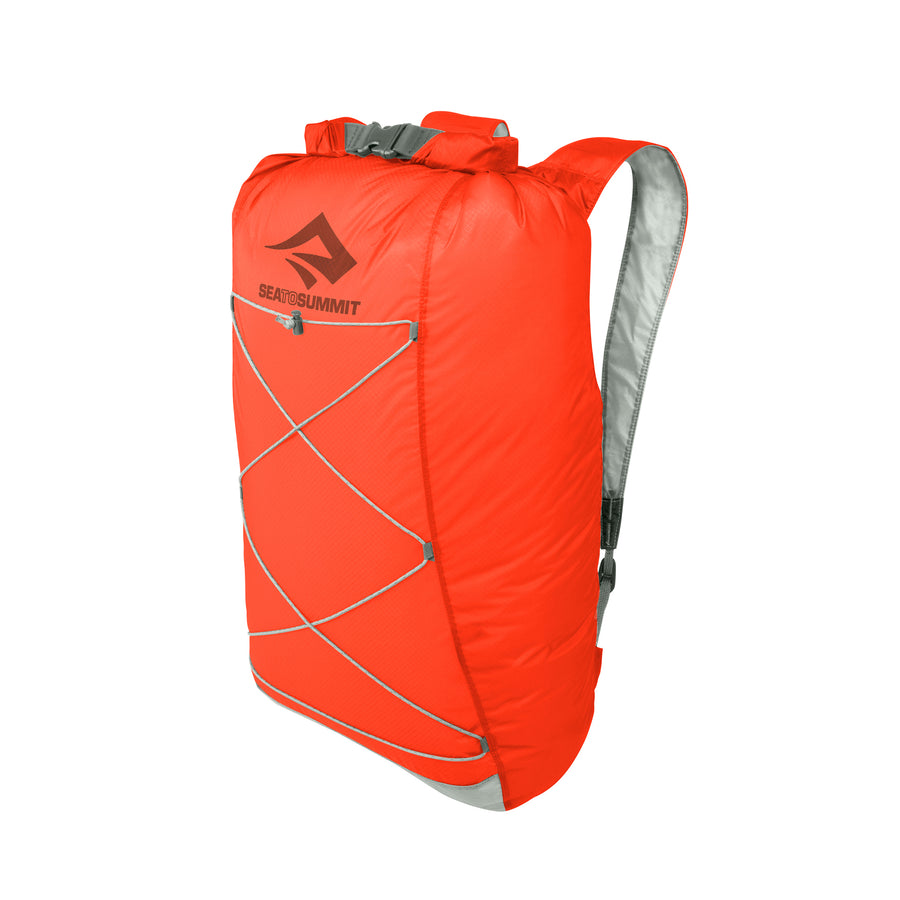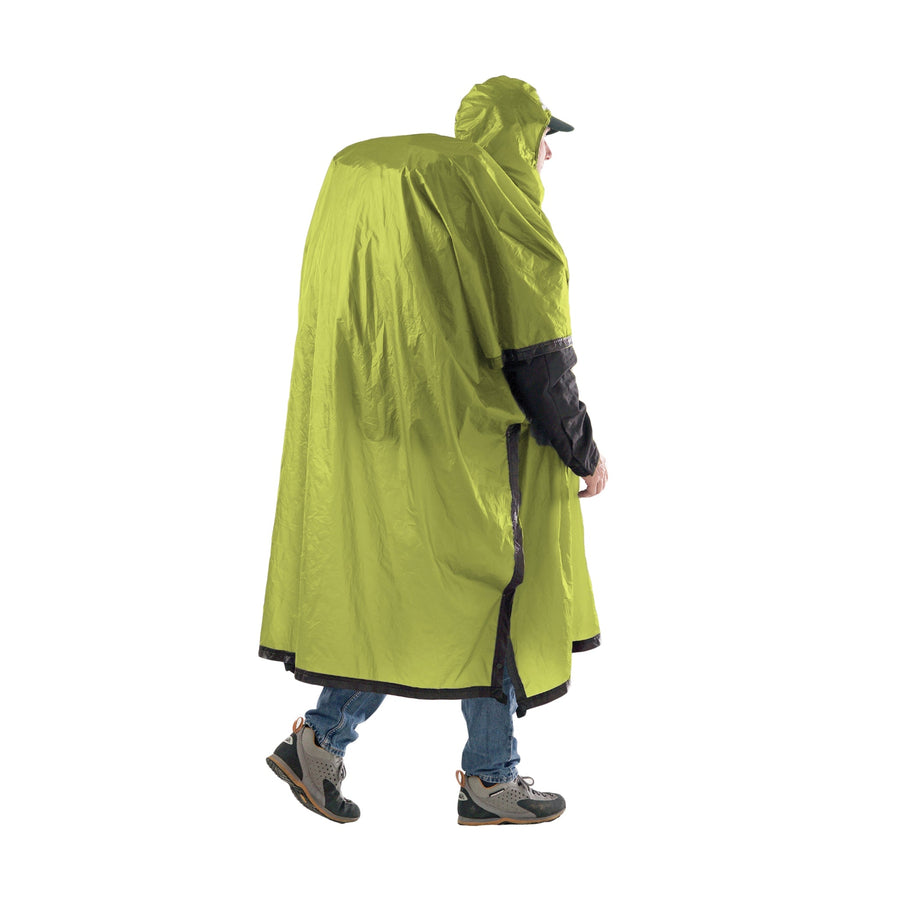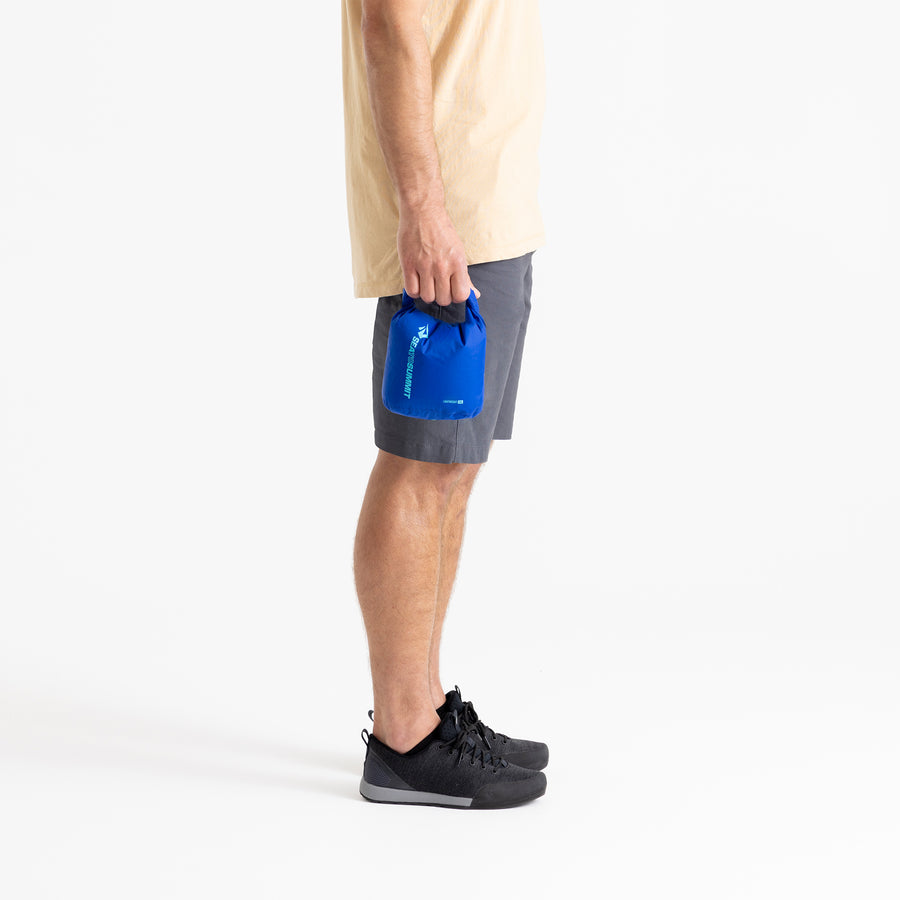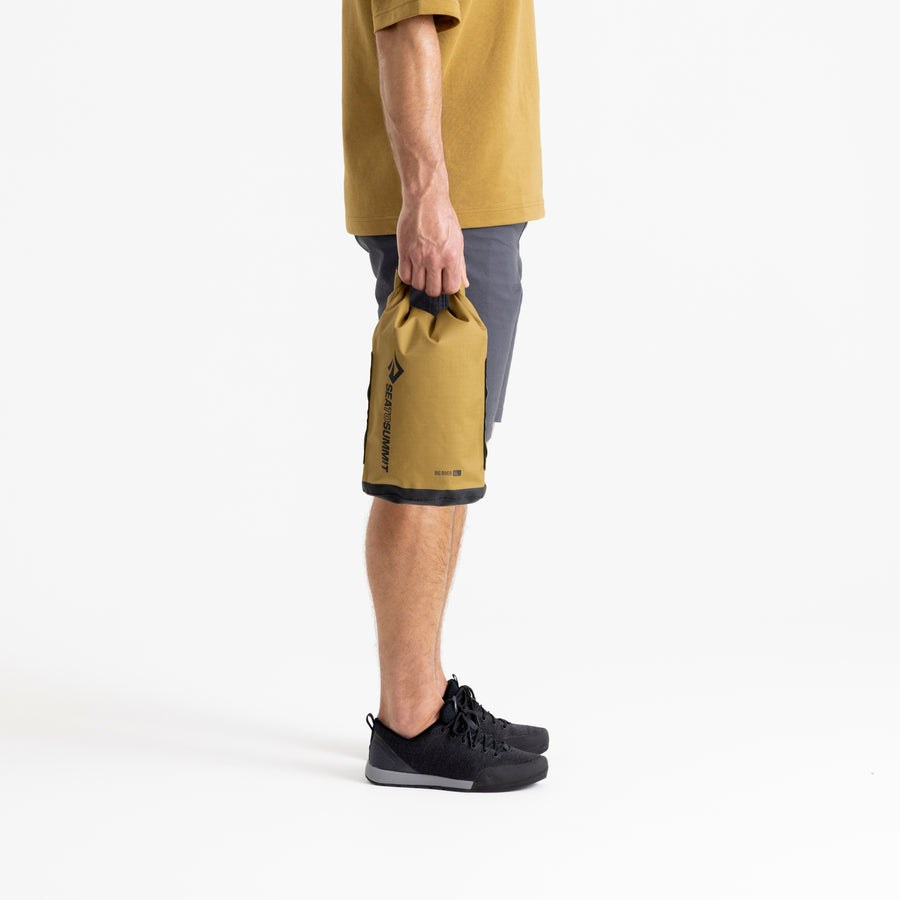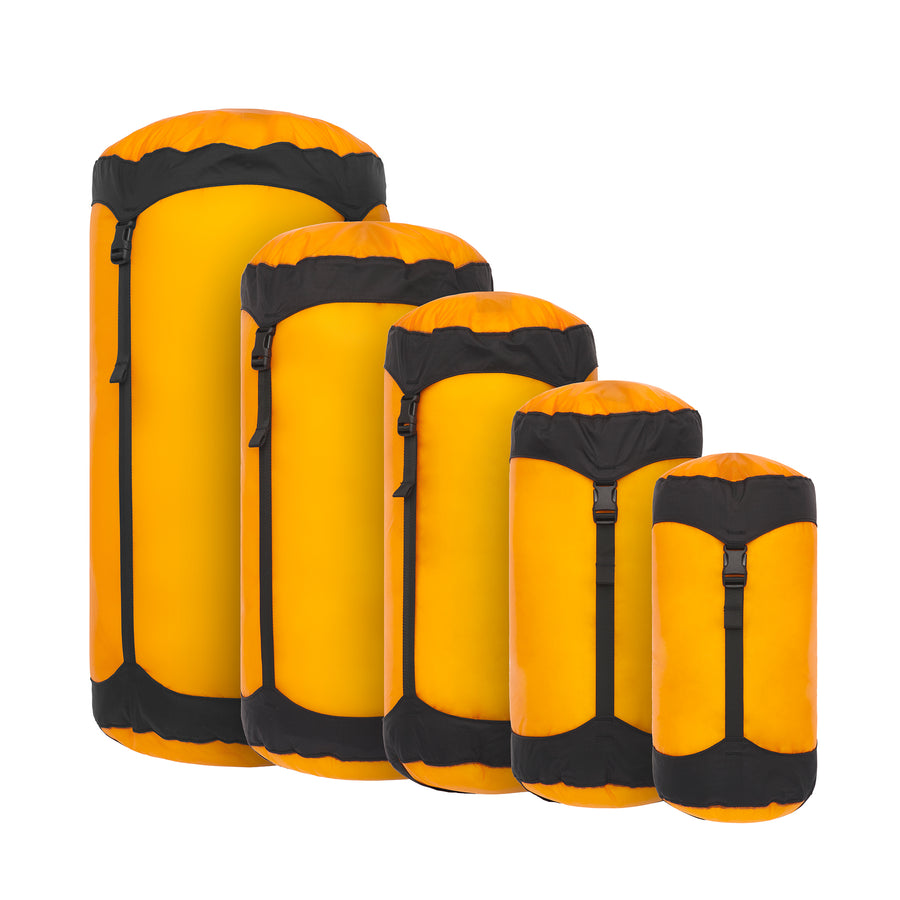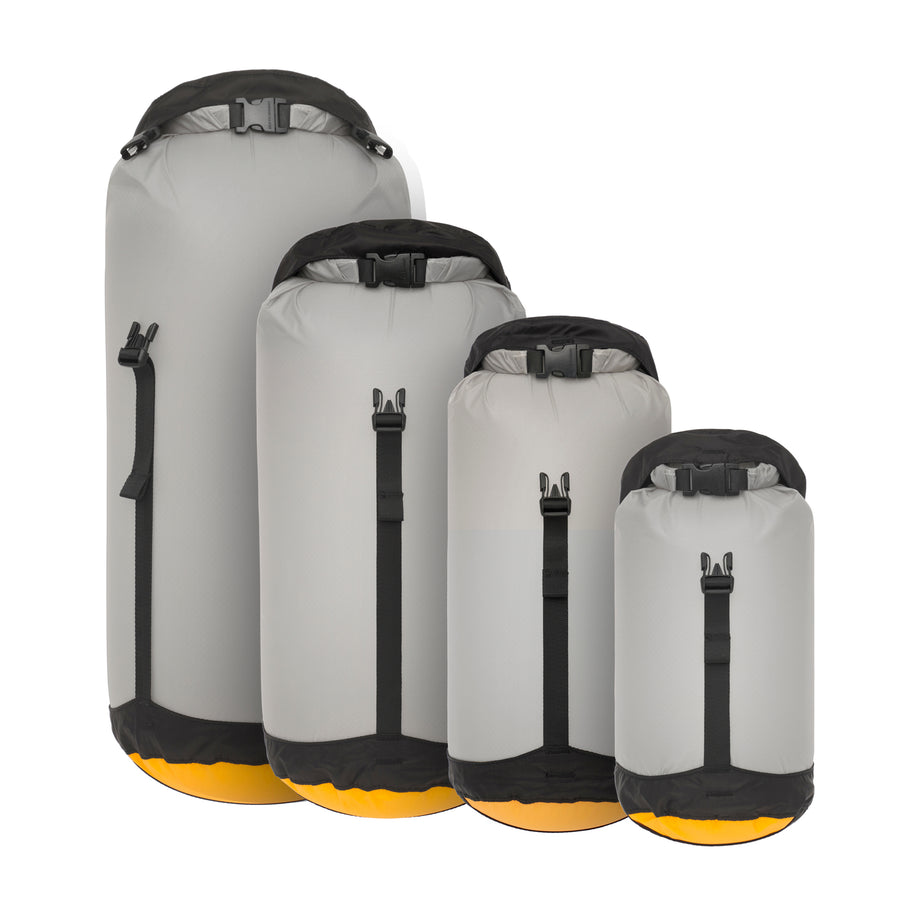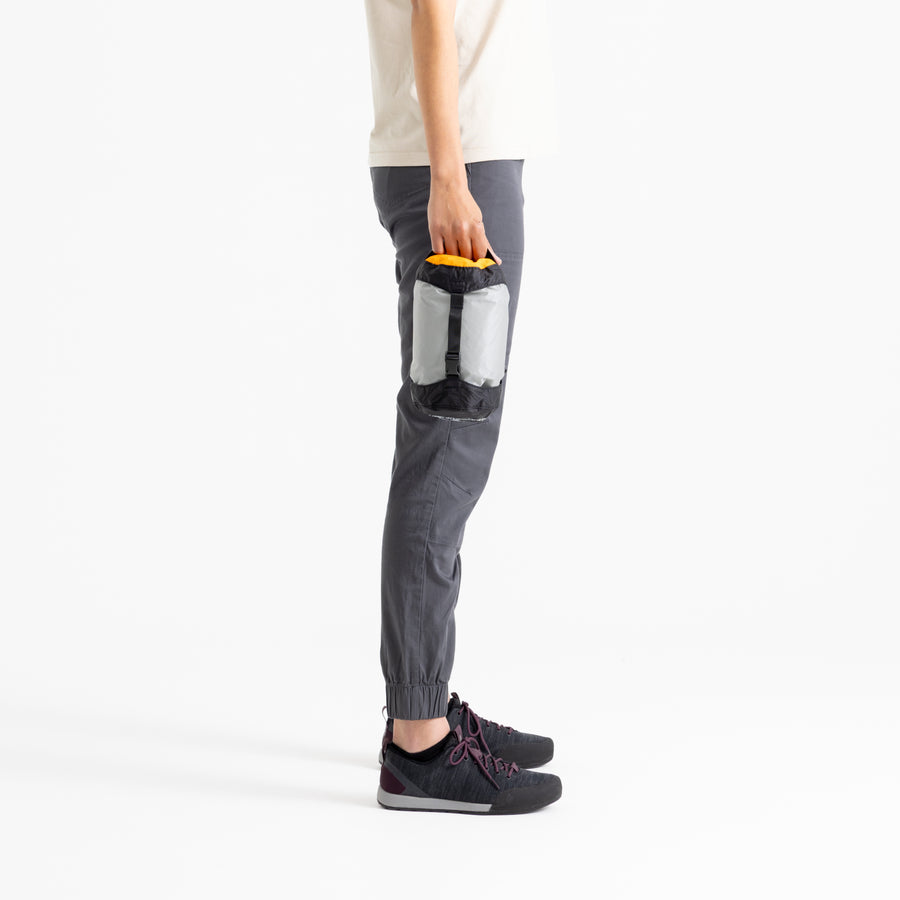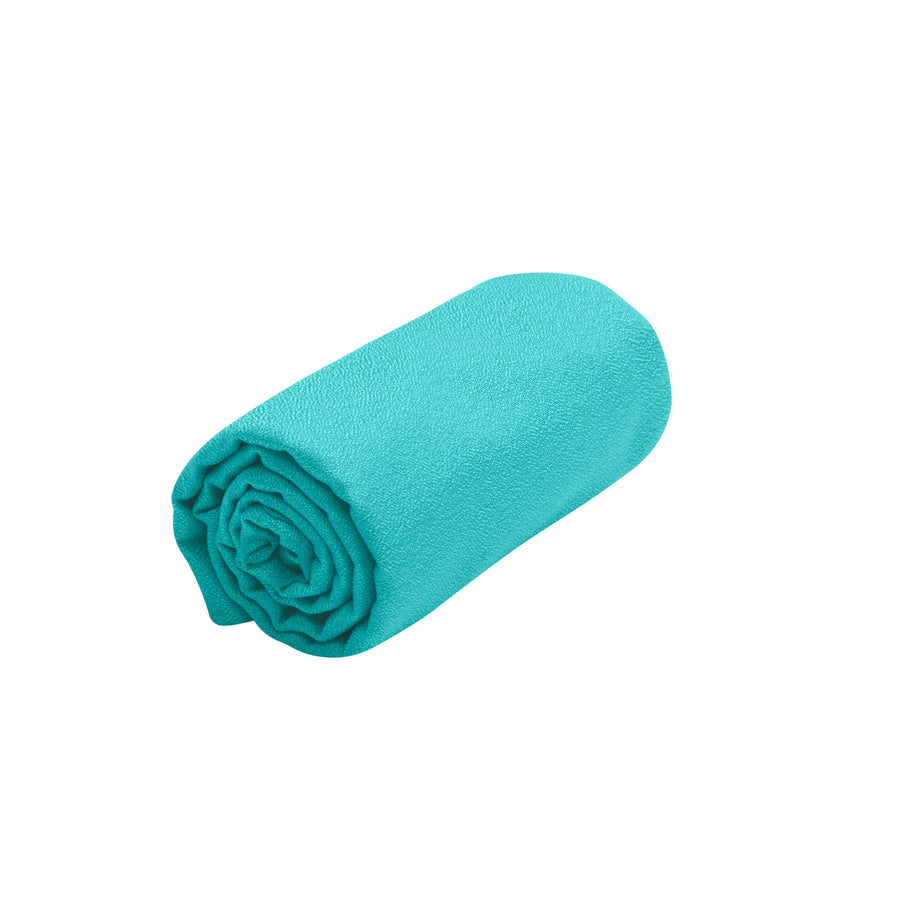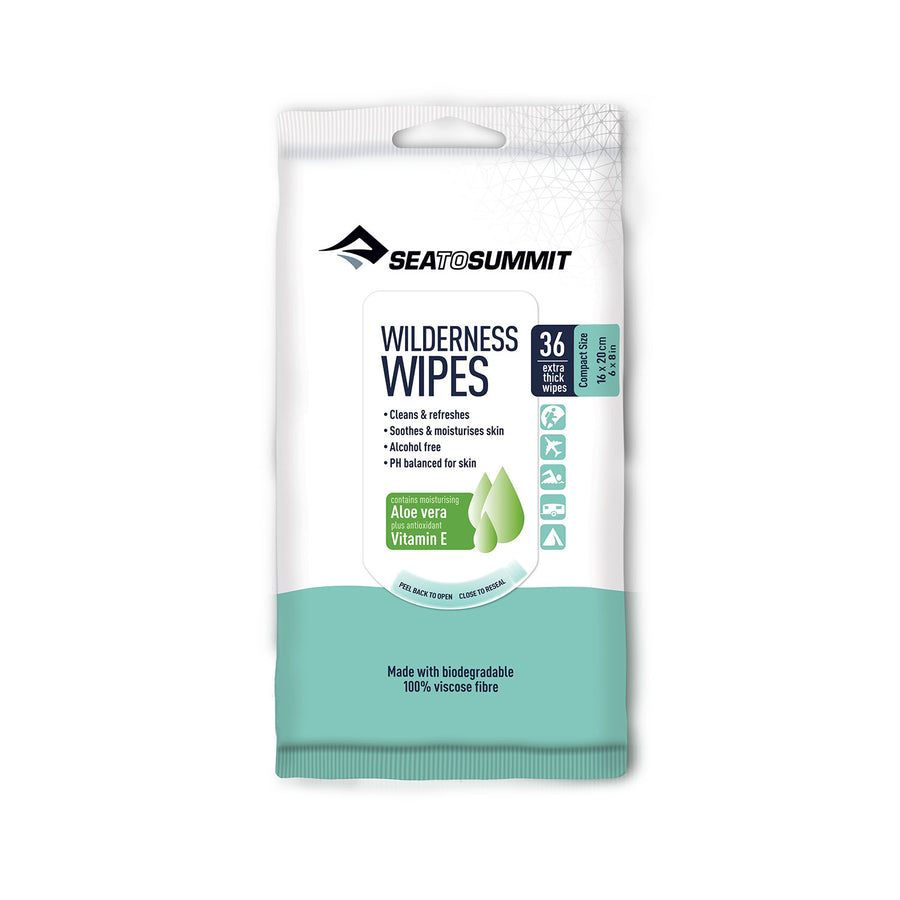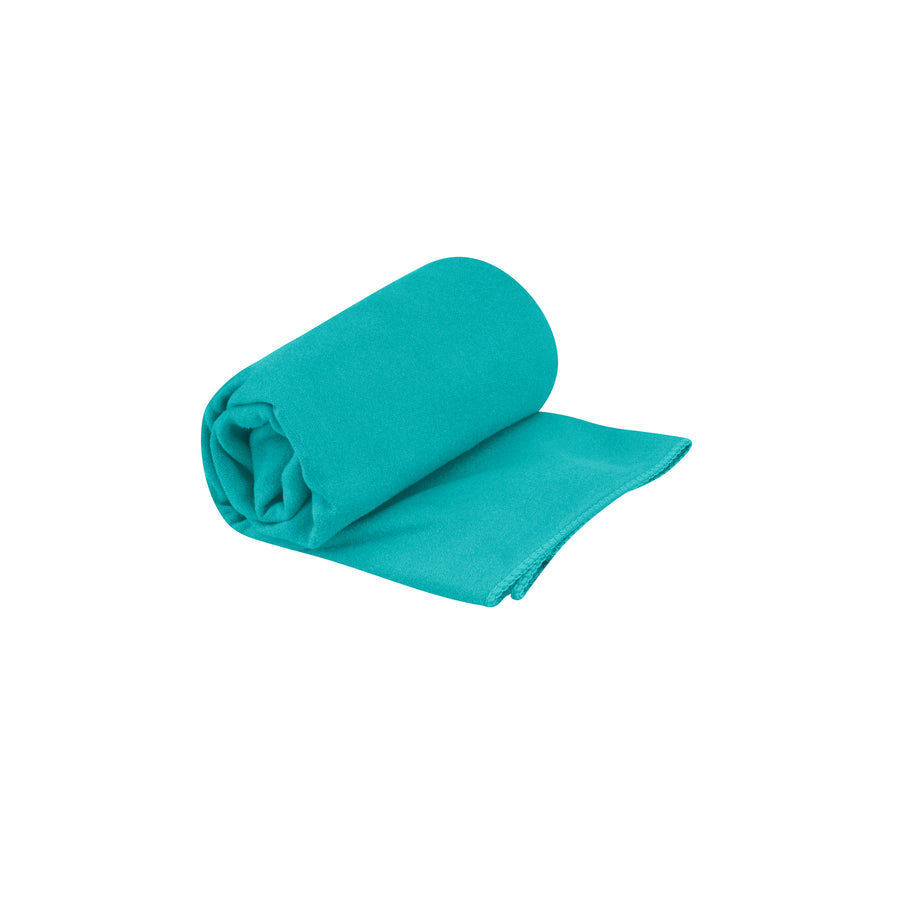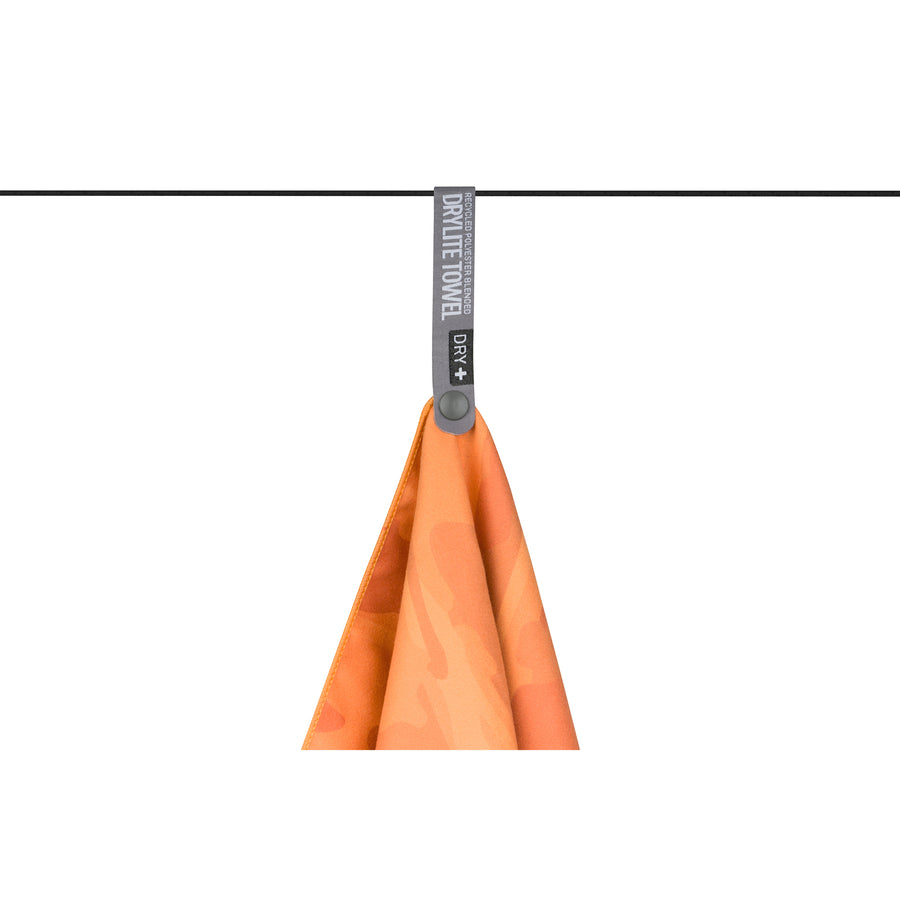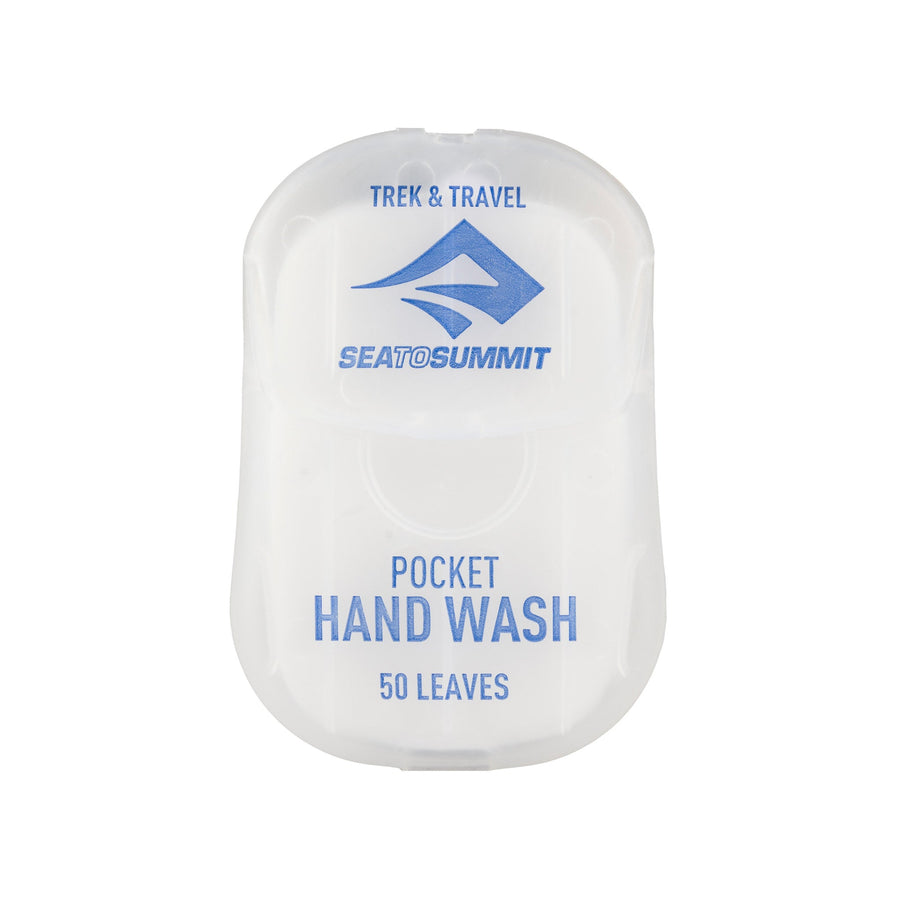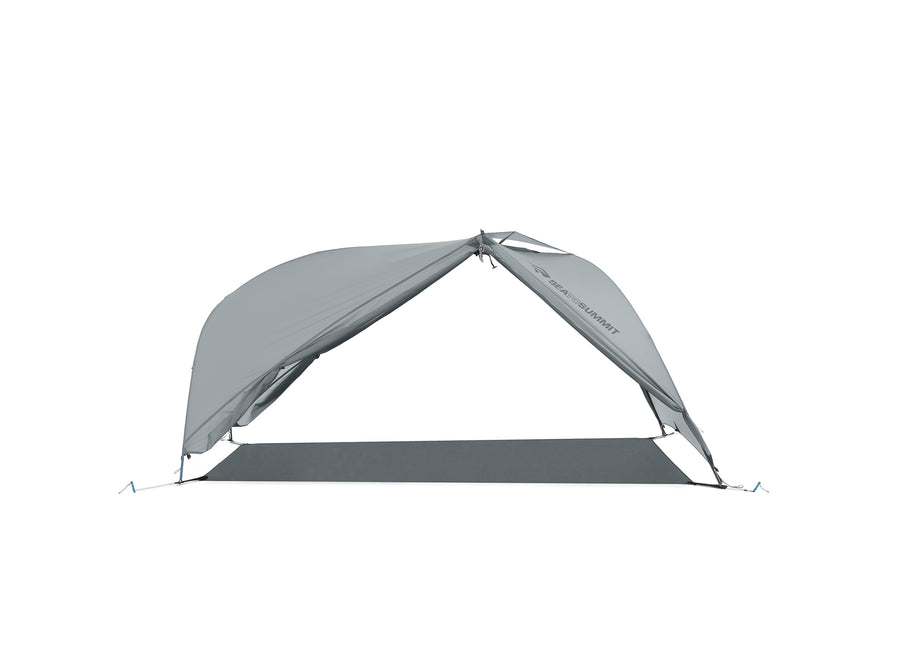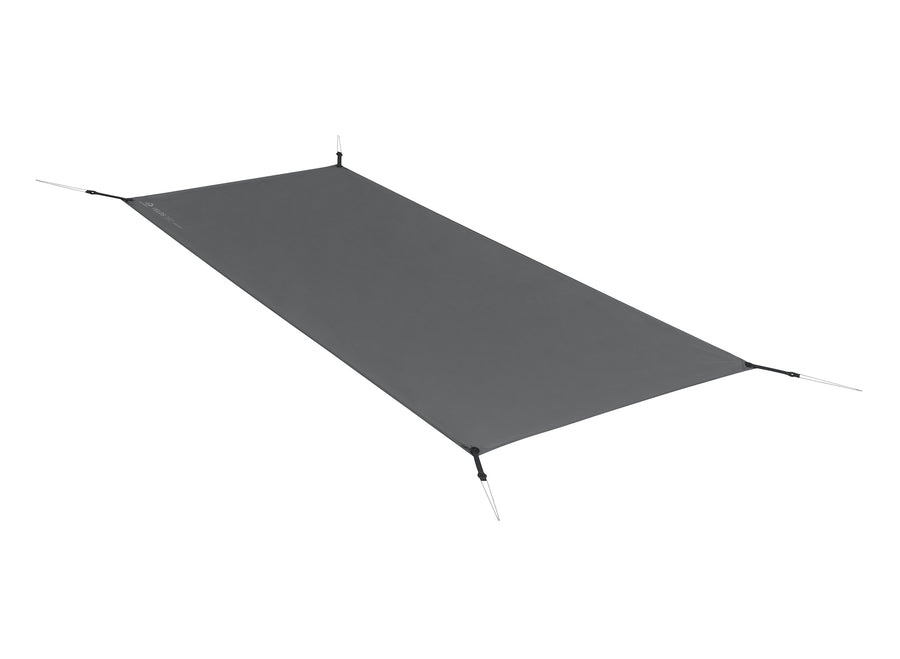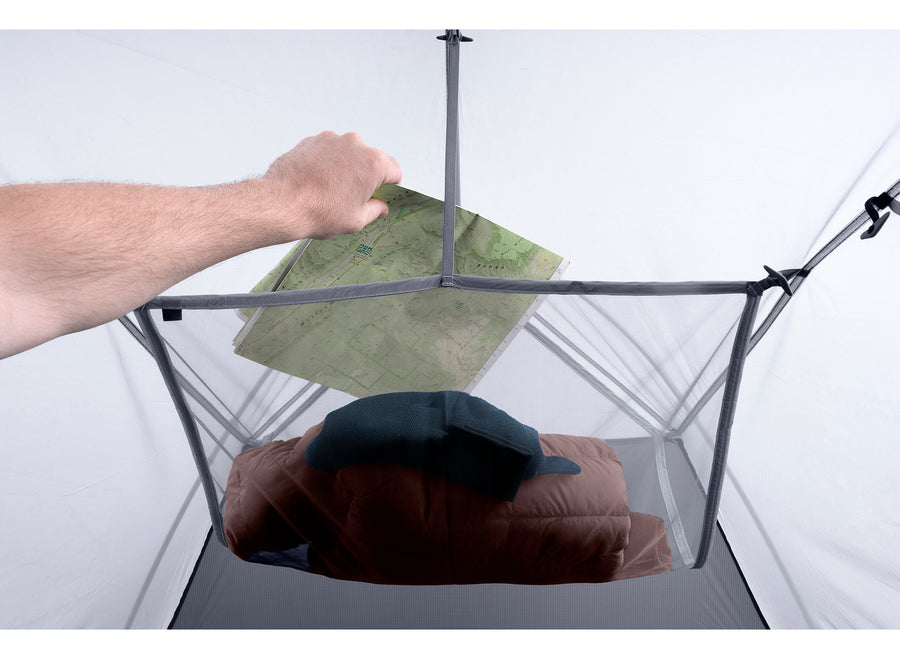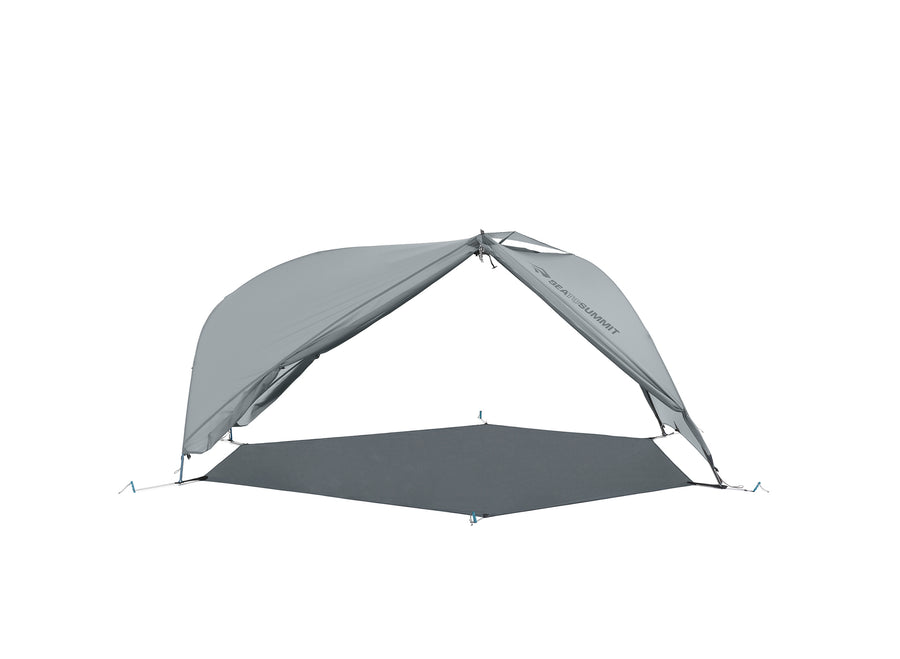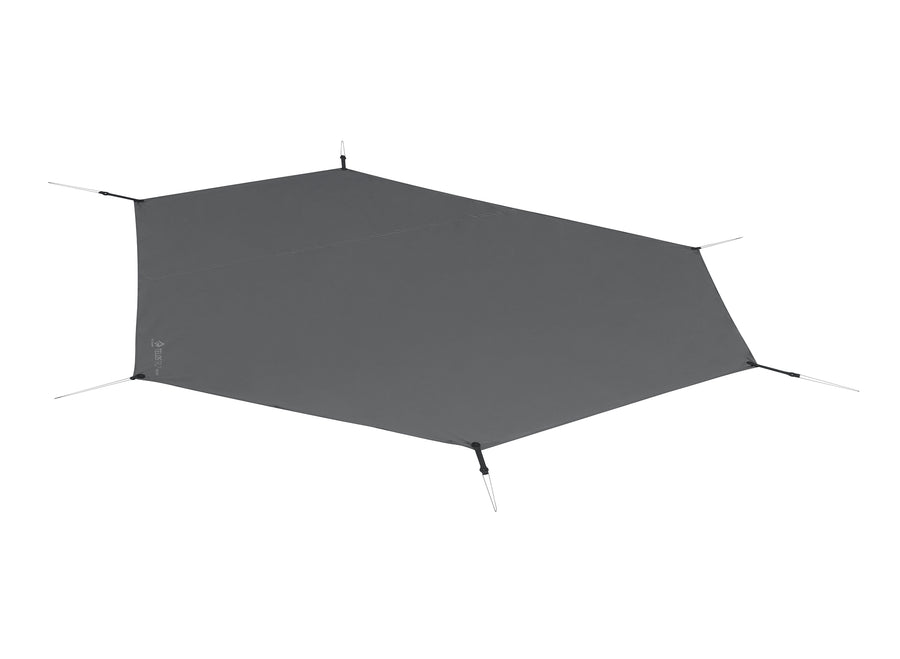How to Repair Your Sleeping Mat
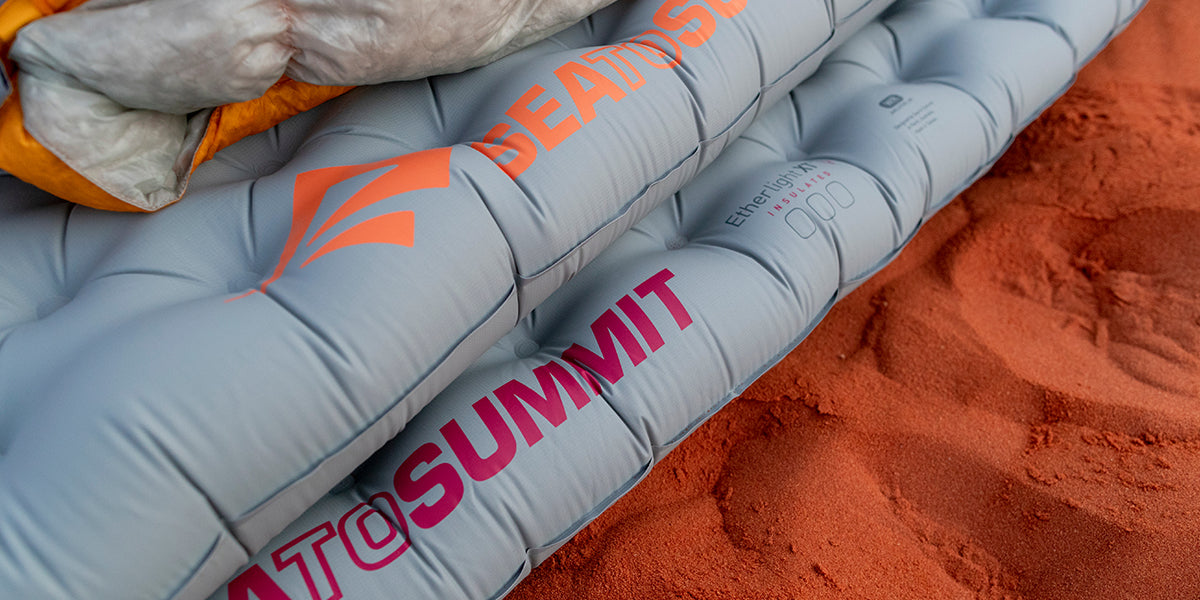
If laying on your mat is giving you a sinking feeling, here’s what you need to know to fix a puncture or tear in your air sprung cell or self-inflating mat. Our mats are manufactured and rigorously tested to the highest standards – but sharp objects can damage even the best camping mats. Repairing our mats is pretty straightforward if you follow these steps – and our customer service team is there to help you if you should need assistance.
STEP 1 | DETERMINE THE POINT OF AIR LOSS
If the mat is deflating, and you’ve visually checked over the surface without finding an obvious point of damage, here’s how to track down the point of air loss
SUBMERSION METHOD
You will need:
- Bathtub, pool, tub or still body of water—the bigger, the better. A swimming pool is ideal, a sink is difficult, and a bathtub is a good compromise.
- Inflate your mat as firmly as possible. Slowly submerge the inflated mat section by section, folding it to increase the air pressure of the section under water. Try submerging 12” / 30cm sections at a time. Most punctures are relatively easy to identify because they release a small stream of bubbles.
- If you do find a puncture, mark the spot with a permanent marker.
- Even if you find one puncture, continue testing the rest of the mattress as there may be multiple points of air loss.
SOAP METHOD
You will need:
- Spray bottle or bowl and sponge filled with a soap-water mix (you probably have our Wilderness Wash in your pack)
- Towel for drying
- Lay mat on a clean surface and Inflate to a firm pressure.
- Using your spray bottle or sponge, cover the surface of the mattress with a light film of soapy water. You may need to massage this into the fabric to make sure that there is a complete film across the top of the mat.
- Push down on the mattress to increase the internal pressure. Small bubbles will form on the surface of the fabric where there is a puncture.
- Use a permanent marker/ballpoint pen to mark any punctures. Make sure that you check the entire surface of the mattress.
- Turn the mattress over and repeat this process on the other side.
- Make sure you completely rinse the surface of the mattress free of soap/detergent before continuing.
Once you’ve identified the puncture, continue on to STEP 2
STEP 2 | REPAIRING YOUR MAT
AIR SPRUNG CELL MATS
The repair process for our ASC mats was designed to be very simple and easily performed in the field.
You will need:
- Adhesive 3M patches (included with all our ASC mats)
- The repair procedure is completed with a fully deflated mattress - if you haven’t marked the points of air loss, go back and repeat STEP 1.
- Make sure that your mattress is free of any soapy residue and is completely dry.
- Lay your completely deflated mattress out on a clean, smooth surface.
- Make sure the area immediately around the leak is clean and free of any residue.
- If you have access to isopropyl alcohol (maybe from a first aid kit), use it to clean the area around the puncture.
- Pick the appropriately sized repair patch from the repair kit. If you need spares, get in touch with us.
- Peel the adhesive backing from the 3M patch and carefully place over the top of the puncture. Make sure that the fabric of the mattress underneath is not creased or wrinkled. Try to minimize contact with the adhesive backing of the repair patch.
- Lightly smooth from the center to each edge of the patch to remove any air pockets that might have formed. Place something flat on top of the patch to weight it down.
- Leave for at least five minutes, then repeat STEP 1 to ensure that the repair has been successful, and that there are no other points of air loss.
SELF-INFLATING MATS
- The repair procedure is completed with a fully deflated mattress - if you haven’t marked the points of air loss, go back and repeat STEP 1.
- Make sure that your mattress is free of any soapy residue and is completely dry.
- Lay your completely deflated mattress out on a clean, smooth surface.
- Make sure the area immediately around the leak is clean and free of any residue, particularly oil.
- If you have access to isopropyl alcohol (maybe from a first aid kit), use it to clean the area around the puncture.
The repair process for our S.I. mats depends upon the model.
FOR CAMP MAT SI / CAMP MAT PLUS SI, ULTRA LIGHT SI AND COMFORT LIGHT SI (AND THE UNDERSIDE FABRIC OF COMFORT PLUS SI AND COMFORT DELUXE SI)
You will need:
- Silicone Adhesive (included with all our S.I. mats)
- 3M patch (included with all our S.I. mats)
- Pick the appropriately sized repair patch from the repair kit. If you need spares, get in touch with us.
- Apply a light covering of silicone adhesive to the hole or tear.
- Peel the adhesive backing from the 3M patch and carefully place over the top of the silicone adhesive. Make sure that the fabric of the mattress underneath is not creased or wrinkled. Try to minimize contact with the adhesive backing of the repair patch.
- Lightly smooth from the center to each edge of the repair patch to remove any air pockets that might have formed. Apply firm pressure for 30 seconds. Place something flat on top of the patch to weight it down.
- Allow a minimum of two hours before inflating mattress, and then repeat STEP 1 to ensure that the repair has been successful, and that there are no other points of air loss.
TOP FABRIC: COMFORT PLUS S.I. AND COMFORT DELUXE S.I.
You will need:
- Silicone Adhesive (included with all our S.I. mats)
- Mesh (included with all our S.I. mats)
- 3M patch (included with all our S.I. mats)
- Plastic square (included with all our S.I. mats)
For holes less than 1/8” | 3mm wide
- Apply a thick layer of silicone adhesive over the hole, at least ¾” |20mm in diameter.
- Allow at least two hours for the silicone adhesive to dry before repeating STEP 1 to check if the repair has been effective and that there are no further points of air loss.
Holes from 1/8” | 3mm to ¾” | 20mm wide
- Cut a piece of the supplied mesh into a shape that’s a little larger than the hole you’re trying to repair.
- Apply silicone adhesive around the hole or tear; the silicone should not overlap by more than ¼” | 6mm. Use the plastic square to work the silicone into the fibers of the fabric.
- Place the mesh onto the silicone adhesive covering the entire hole or tear.
- Squeeze more silicone onto the top of the mesh and spread with plastic square, making sure that it is completely covered.
- Leave for at least two hours, and then repeat STEP 1 to make sure that the repair has been effective and that there are no further points of air loss.
STEP 3 | TESTING FOR AIR LOSS FROM THE VALVE
Our valves are a Sea to Summit design, and are custom-manufactured for our mats. They are extremely reliable – we very, very rarely encounter problems of any kind with valves. If you are unable to find a point of air loss on the fabric ‘skin’ of your mat, here’s how to check for air loss from the valve:
DUNKING METHOD
You will need:
- Bathtub, pool, tub or still body of water—the bigger, the better. A swimming pool is ideal, a sink is difficult, and a bathtub is a good compromise.
- Submerge your inflated mat in water for at least 30 seconds.
- Pay close attention to the hinge on the valve as an air bubble may take around 15 seconds to form.
If you detect air loss from the valve, go to STEP 4.
If the air is escaping from another part of the mat, go to STEP 2.
STEP 4 | PREVENTING AIR LOSS FROM A VALVE
You will need:
- Clean hands or gloves
- Clean micro-fiber toweling with no frayed edges
- Petroleum jelly (such as Vaseline)
- Use the micro-fiber towel to wipe the valve clean—removing any dirt or sand that might be on the contact surfaces
- Apply a film of petroleum jelly on each valve contact surface
- Leave for 24 hours, to allow the TPU to absorb a small amount of the petroleum jelly.
- Wipe the valve clean with your micro-fiber towel.
PRO TIP: store your air mat or si mat with the valve open – this will allow moisture to dry out from inside the mat and prevents undue pressure from possibly deforming the valve
If you still detect air loss from the valve, jump to STEP 5
STEP 5 | WARRANTIES
If you’ve gone through the above steps and your mat is still deflating, please contact us.


